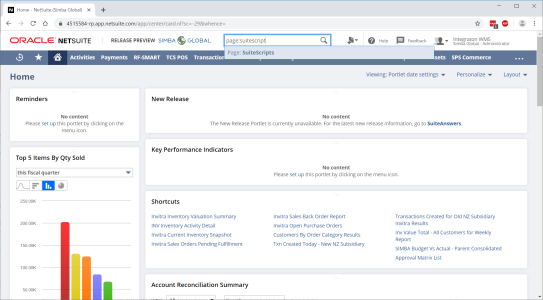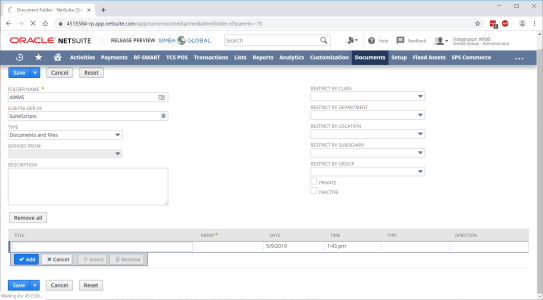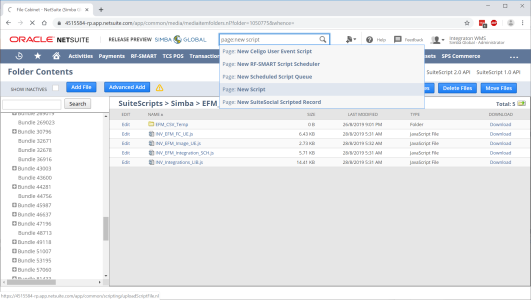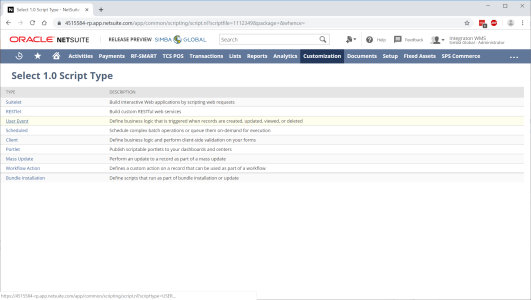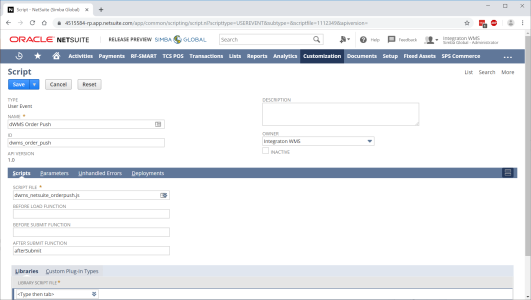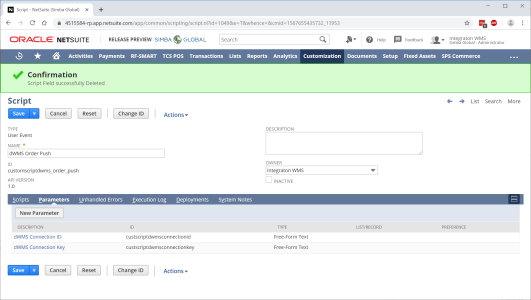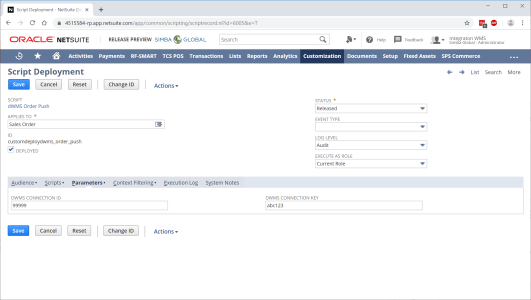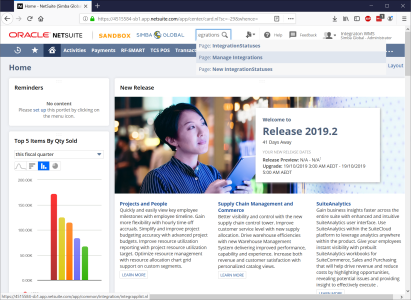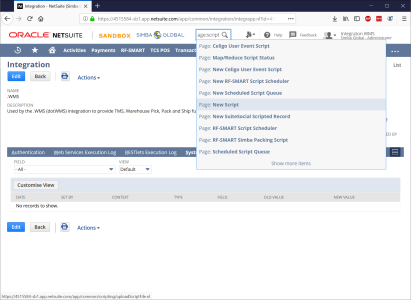Integrating With NetSuite
Support login credentials are available in 1Password.
Consumer Key f715c723316deeaa7c51f39c45175acf0143710d3416c5a074315fb2a07a8633
Consumer Secret 8229bf35194b9052b2fc5d702b90aa6aff0254e664a5340ee4ec7e1fe55a6490
Use NetSuite's guide to setting up token-based authentication.
Token Id 629d9b4e52f2a75832455a9f155a40e21ad330deaf1c26d024ee153b583f7ff8
Token Secret 77f09533810b9fcfba75a7f1d937a3637a7327454235dd7e0ce82fac88cd0756
You need to add a connector to communicate between .wms and NetSuite.
Then add script files for each event-driven activity unique to each customer. You will also need to include a Restlet file.
The following provides guidance on standard workflows.
Note: Most of the NetSuite connections are customised to specific requirements. Refer to notes for each customer.
|
Message |
Technology |
Comments |
|---|---|---|
|
Item Master Data |
User event triggered within NetSuite to POST to the .wms API. |
This is typically heavily customised to bring through fields needed for customer; NetSuite does not have a native understanding of trade unit dimensions. The base connector brings through default fields only. |
|
Item Fulfilment Creation / Update |
User event triggered within NetSuite to POST to the .wms API. |
Item fulfilments are the records created for all outgoing shipments in NetSuite (sourced from Sales Orders and Transfer Orders). Note - the typical expectation is that clients will have their own process to generate Item Fulfilments. |
|
Item Fulfilment Completion |
.wms File Export POST to NetSuite RESTlet (via ERPGate) |
Marks the Item Fulfilment record as shipped, and attaches the connote number to the Item Fulfilment. Notes - clients will typically build some automation to automatically invoice upon the Item Fulfilment being marked as shipped. Special care is needed if the client wishes to do short-shipments. |
|
Purchase Order Creation / Update |
User event triggered within NetSuite to POST to the .wms API. |
Handled as SimpleReceipts in .wms. |
|
Transfer Order Creation / Update (when it is in Pending Receiving status) |
User event triggered within NetSuite to POST to the .wms API. |
Handled as SimpleReceipts in .wms. |
|
Item Receipt Creation |
.wms File Export POST to NetSuite RESTlet (via ERPGate) |
Receipt completion sourced from the Purchase Order and Transfer Order records. |
|
Stock Adjustment |
.wms File Export POST to NetSuite RESTlet (via ERPGate) |
You must configure the GL account to which adjustments are posted. |
-
Enter Page:SuiteScripts in the Search field.
Documents is highlighted on the top navigation bar.
-
Select New Folder.
-
Enter dWMS as the Folder Name.
-
Enter the Title of the file and click Add.
-
Click Save.
-
Add the dWMS connector JS file.
This is specific for each customer.
-
Enter Page: New Script in the Search field.
-
Select the uploaded dWMS connector JS file.
-
Click Create Script Record.
The Customisation tab is highlighted and the Select 1.0 Script Type page displays.
-
Select User Event in the Type column.
-
Enter a Name and ID for the script.
-
In the Search field, enter Manage integrations.
-
Make sure to check the scripts and integration.
